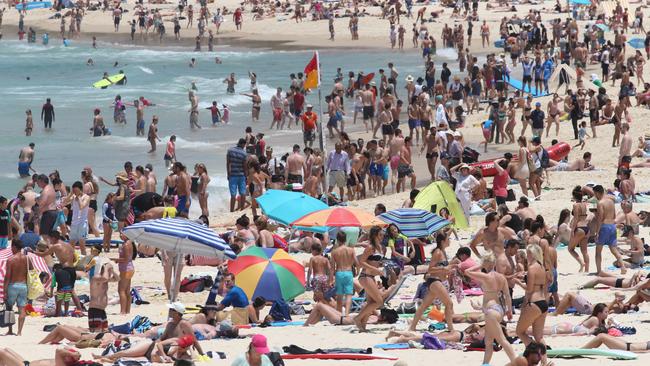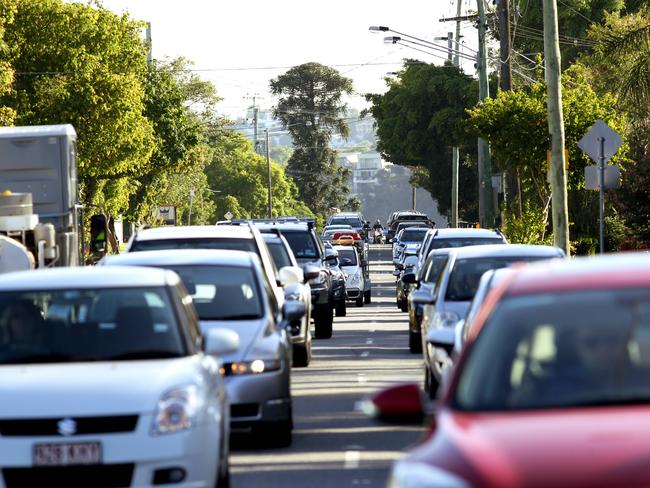Australia’s new milestone: How far we’ve come since the 23 million mark
AUSTRALIA has just reached an incredible new milestone, and more are on the way. The pressure on our country is about to ramp up.

AUSTRALIA, meet Oliver, the 24,000,000th Australian (probably).
Oliver, according to experts, is the most likely name of the baby whose birth pushed our nation’s population clock over 24 million in the wee hours of this morning. For the record, if the milestone baby was a girl, her name was most likely to be Charlotte.
The 24 millionth birth comes 32 months after Australia’s population topped 23 million and means we’re growing at a rate faster than ever before and faster than experts had predicted. Consider this: Australia will be home to a staggering 40 million people by 2050, at least. We could reach 50 million within some of your lifetimes (2087).
The population is growing, but it’s also changing. We interact, work, play, use technology and view our surroundings differently in 2015 than we did when there were only 20 million of us way back in 2003. These are some of the more meaningful changes.
WE REINVENTED THE SELFIE

Twitter, Facebook, MySpace even. None of them existed before 2003. The hashtag hadn’t been invented yet and that smartphone you’re probably reading this on was just an idea in somebody’s head. Forget about selfies, they’re a relatively recent phenomenon, too.
“The big thing, the most significant change, has to be the rise of social media,” Sydney-based social researcher Mark McCrindle told news.com.au.
“It’s transformed things. It was pre-Facebook, it was pre-social and pre-devices that we know today; we were very much in the analog space. The word ‘cloud’ meant something different and we used SMS not text.”
Mr McCrindle said we’ve been empowered by the changes and the Australia we live in now — all 24 million of us — is completely different to what it was then.
“Where we shop, how we shop, that’s all changed. It’s all online now and when we shop in store we ‘tap and go’. How we find out about what’s happening in the world is also different, it’s through trending topics now. We were a lot more simple back then. We seem to forget how fast we’ve grown.”
CAN WE SUSTAIN IT?

With population growth comes pressure. Pressure on infrastructure and pressure of services. But Mr McCrindle says there are plenty of positives to come from a growing population too.
“From a domestic consumption perspective, there’s more of us, so that’s been positive for sales and the economy. It’s helped mitigate our ageing population, too.”
He said Generations X and Y would be tasked with managing a population growth far exceeding anything that was predicted 10 years ago.
“The key challenge is infrastructure. Are we planning and investing for the growth we’re currently seeing? If town planning and government infrastructure is based on the forecasts of the slower growth, then we’re going to be feeling the bottleneck more soon.”
There are 300,000 births per annum in Australia. On top of that there’s a steady flow of migration. Mr McCrindle said that’s pushed our population higher than expected but it’s going to be needed as we focus on feeding, housing and moving people through already congested cities.
“Skilled visa workers are the backbone of so many sectors of the economy,” he said.
“We look at the construction sector, much of the skill there is coming from those on a skilled visa. Agriculture is made up from workers on skilled visas more than ever.”
BY THE NUMBERS

Mr McCrindle said Australia reached 23 million people on April 23, 2013. That means we’ve gained our latest million in a space of two years, nine months and two days. Never before has Australia added a million people within three years. Get used to it, experts say.
“From 1954 when the population hit 9 million, until 2003 when the population hit 20 million, each addition million was added in a time span of around four and a half years,” Mr McCrindle wrote this week.
“From 20 to 23 million, the time span had decreased to add each million every three and a half years.”
Mr McCrindle said previous forecasters predicted Australia would reach today’s population by 2033. So we’re 17 years ahead of schedule.
It’s taken 48 years for Australia’s population to double — there were only 12 million Australians in 1968. The statistics are mind-blowing but a drop in the ocean compared to what’s happening around the world.
“While Australia’s population growth is significant in national terms, our new milestone of 24 million is small compared to the US population of 323 million,” Mr McCrindle said.
“In a global context, Australia’s share of the world’s population is just 0.32 per cent, less than one third of 1 per cent.”




